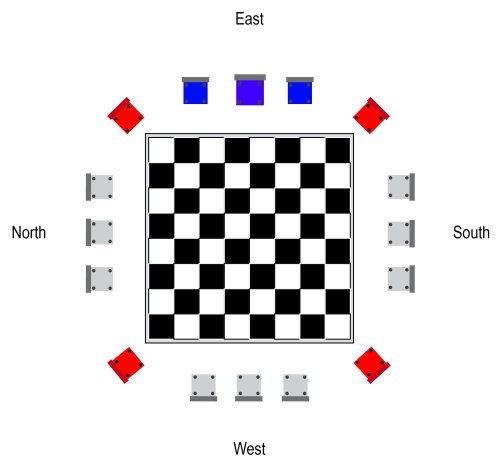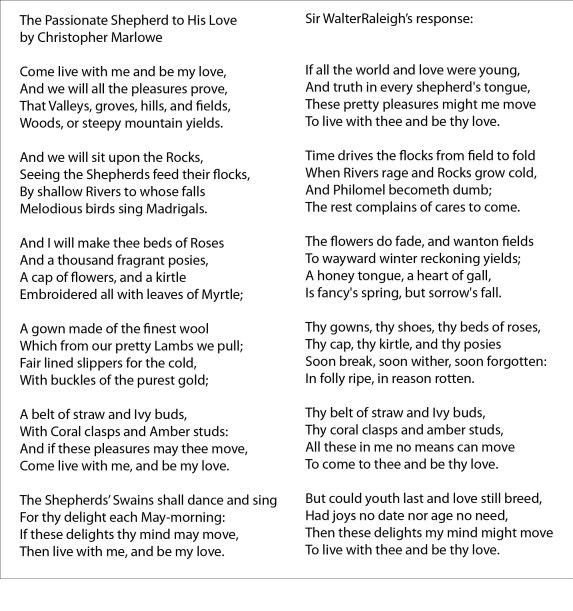“Strike man, strike!”
Those were the last words of Sir Walter Raleigh, spoken to an executioner who was taking his time, at the end of one of the most colourful lives of the whole Elizabethan era. The attitude–not of defiance, but of expediency–typified this adventurer’s life.
Raleigh had charmed Elizabeth I, but failed to do so with her successor, James I of England, who inherited the throne on the death of the childless ‘Virgin Queen’ in 1603. Despite the religious horrors of her early years, Elizabeth was pragmatic about religion, and actively sought to calm the religious stresses that the ‘bloody reign’ of her half-sister, Queen Mary I, had unleashed.
Raleigh was born into a strongly Protestant and well-connected family in Devon. Their lives had been blighted by religious persecution, and the aspiring Raleigh fitted Elizabeth’s cause well. As a young soldier of seventeen, he began a three year period of fighting for the Hugenots in France, an apprenticeship that was to fashion his outer persona as a handsome, gallant and efficient soldier.
An early academic start at Oxford University was cut short, and he never finished his degree. Instead, he later studied at the Inns of Court in London, though, at the end of his life, he denied he had ever studied law. He had become an accomplished soldier, and rose to fame as part of Elizabeth’s force in Ireland, which was tasked with putting down the frequent rebellions, which were stirred from afar. The Pope had sanctioned a series of incursions into southern Ireland, with the intention of supporting its Catholic traditions, and creating insurrection against England.
Raleigh served as a junior officer in the infamous Siege of Smerwick on the tip of the Dingle peninsula. Hundreds of Spanish and Italian soldiers had been landed there by boat and had prepared a hasty fortification using the ruins of a stone-age settlement. The English forces were soon on the scene. Messengers, sent earlier by the English, had been massacred and hung up, as trophies. Lord Grey, Elizabeth’s Deputy of Ireland, surrounded the invaders and began the Siege of Smerwick, which led to the brutal massacre of the six hundred invaders.
It is likely that, while serving under Lord Grey, Raleigh met Edmund Spenser–soon to be one of the most famous of the Elizabethan poets. Spenser was serving as military secretary to Lord Grey. His most famous poem, The Faerie Queen, was later presented at Court to Elizabeth, to whom it was dedicated. Raleigh, by then elevated in rank and rich in confiscated Irish estates given to him by the Queen, is likely to have been one of the sponsors of this introduction, since the two were neighbours in Munster.
Raleigh was a dazzling courtier, and renowned for his sparkling wit and quick-mindedness. Elizabeth was twenty-four years his senior, and, though no-one’s fool, she enjoyed his attentions and his intelligence. Once within the royal arc, Raleigh rose rapidly in her favour, and was knighted in 1585 at the age of thirty-one.
In 1591, in what the Queen was to see as an act of betrayal, Raleigh secretly married one of her ladies-in-waiting, Elizabeth ‘Bess’ Throckmorton. She was pregnant with their child at the time, though the child died of plague in 1592. Bess returned to her duties with the Queen, who soon discovered what had happened. In her fury, the Queen had both Raleigh and Bess imprisoned in the Tower of London.
But Elizabeth needed his expeditionary expertise and released him to oversee an attack on the Spanish coast. The fleet was recalled at the last minute, but Raleigh had already captured a rich merchant ship, the Madre de Deus, sailing off the Azores. On his return, Elizabeth sent him back to the tower to remind him of her authority over his life. She released him shortly afterwards and allowed him to become a member of Parliament, where he soon established a reputation as an eloquent speaker on religious and naval matters. Bess had also been forgiven and resumed her duties at the Queen’s side.
For the rest of their lives, Raleigh and his wife remained devoted to each other. They had two more sons. Elizabeth died in 1603. Raleigh did not get on with the more cautious James I, who was fervent and dogmatic in his religious beliefs and suspicious that the Queen’s former favourite was one of a new breed of ‘free-thinkers’, more allied to the world of knowledge than of God. Elizabeth had been keen to stay abreast of the emerging fields of what we would now call natural sciences, particularly where she could see advantage for her England. But James was more superstitious and frightened of anything that bordered on what he saw as magic, having been persecuted, he believed, by witches in Scotland. Raleigh, along with Henry Percy, Earl of Northumberland, was a founder of a mysterious organisation known as The School of the Night… Under James, this was asking for trouble.
How does all this relate to our mystical workshop in April 2018?
In our story, when the company arrives at NonSuch palace, they are shown into a newly-prepared room, one in which a deadly search for the truths of the age will be played out on many levels: intellectual, emotional, religious and magical. Outside of the Queen’s own mind, no-one else in the room is aware of what is to follow.
What confronts the participants in the centre of the space is a huge game board consisting of black and white squares…

Each side of the board has its own symbolism and its own champion. In our five-act magical drama, Raleigh is selected by the Queen to be one of her Champions. To do this, he must represent the house of Adventure, a role to which he agrees he is suited. But only the Queen and one of her advisors knows the full pattern of the relationships which will unfold as each character shows their strengths… and their vulnerabilites.
At the start of the game, the Queen asks them all to help her answer a single question, revealed only when she begins speaking. The purpose of the Questioning at NonSuch, as these few days will come to be called, is to provide the answer, no matter how demanding the process…
We can speculate on his history but nothing reveals the soul of a person like their own writings. Raleigh’s life had many facets, including being a father, soldier, statesman, spy. philosopher and poet. The severity of his early life gave him little time for the fanciful. He loved poetry from an early age and was considered one of the finest poets of the day.
By way of an example, Christopher Marlowe, the Elizabethan playwright who was a contemporary of Shakespeare, was ten years younger than Raleigh. Raleigh considered Marlowe’s famous poem ‘The Passionate Shepherd’ to be hopelessly romantic and ungrounded. Below is a comparison of Raleigh’s notorious response to the original – The Nymph’s Reply to the Shepherd.
There is much to learn about the man from the subtleties in the verses, matched, here, to the original.
 The Silent Eye’s spring workshop 2018 is: “The Jewel in the Claw’. The jewel is the emerging spirit of tolerance that Elizabeth, the self-styled virgin-queen, engendered; the claw is the nature of the forces of ignorance that still plague us in the twenty-first century every bit as much as they did in 1588, the year that the mighty Spanish Armada was defeated by a combination of English naval courage and our equally fabled weather; and Elizabeth I finally achieved a degree of security.
The Silent Eye’s spring workshop 2018 is: “The Jewel in the Claw’. The jewel is the emerging spirit of tolerance that Elizabeth, the self-styled virgin-queen, engendered; the claw is the nature of the forces of ignorance that still plague us in the twenty-first century every bit as much as they did in 1588, the year that the mighty Spanish Armada was defeated by a combination of English naval courage and our equally fabled weather; and Elizabeth I finally achieved a degree of security.
The Silent Eye has produced dramatic mystical workshops since its inception in 2013, but this is a break from tradition, and will stick closely to the formula of an actual Elizabethan production, letting the acts of the play tell the deeper story. There is no formal audience, of course. We, the players, play to each other, and in doing so invoke the desired depth of psychological and spiritual interaction.
If you’ve never been to such an event before, don’t be over-faced by this heady agenda. There are always new people joining us, and we take great care to ensure they are comfortable. We do not expect our ‘actors’ to learn their lines! We all read from scripts – as though doing a final rehearsal, but the atmosphere is truly electric and you will find yourself working to bring your character to the greatest life you can give them! You will also find they stay with you for years afterwards…
Above all else it is always fun; and every year, come the Sunday farewell lunch, those attending do not want to go home and end that living link with a body of experience and aspiration that they have helped create…
We can honestly say that the workshops become a living thing, formed and sustained in the minds and hearts of those attending. Come and join our ‘merry band’ and you’ll want to come back.
Places are still available for ‘The Jewel in the Claw’. 20-22 April, 2018. The average price is approximately £250, fully inclusive of all meals and accommodation. You will struggle to find a better value weekend, anywhere.
The weekend workshop will be held at the lovely Nightingale Centre, Great Hucklow, near Buxton, in the heart of the Derbyshire Dales at a wonderful time of year – the spring.
You can download the pricing and booking form here:
Image: Composite of original artwork by the author plus a portrait of Sir Walter Raleigh courtesy of Wikipedia, CC by 3.0, Public Domain.

Stephen Tanham is a director of the Silent Eye School of Consciousness, a not-for-profit organisation that helps people find the reality and essence of their existence via low-cost supervised correspondence courses.
His personal blog, Sun in Gemini, is at stevetanham.wordpress.com
©️Stephen Tanham.


Thank you, Alethea.
Reblogged this on Stuart France.
Thank you, Stu.